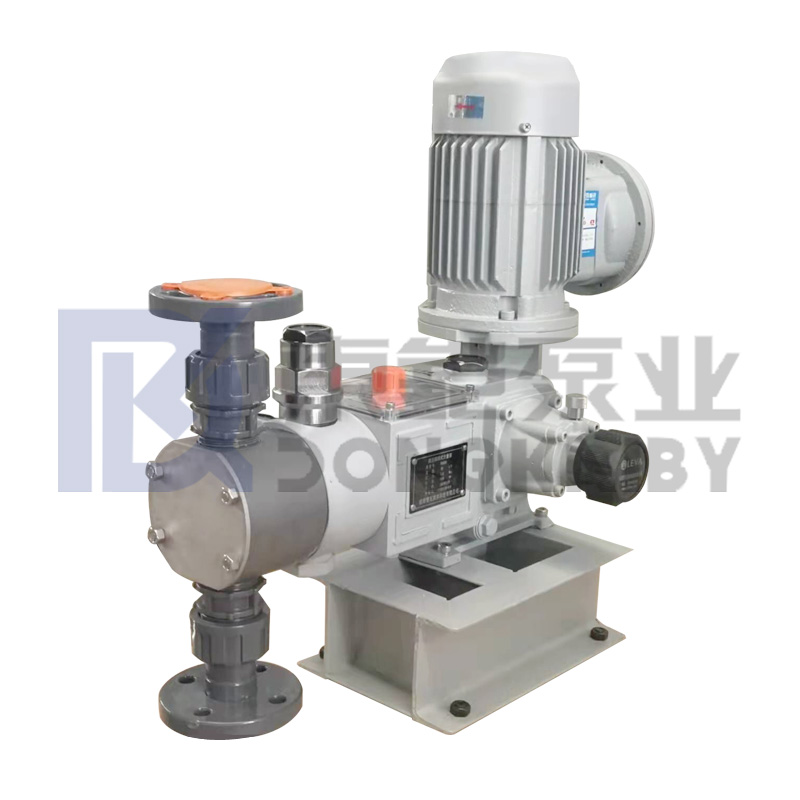- English
- Español
- Português
- русский
- Français
- 日本語
- Deutsch
- tiếng Việt
- Italiano
- Nederlands
- ภาษาไทย
- Polski
- 한국어
- Svenska
- magyar
- Malay
- বাংলা ভাষার
- Dansk
- Suomi
- हिन्दी
- Pilipino
- Türkçe
- Gaeilge
- العربية
- Indonesia
- Norsk
- تمل
- český
- ελληνικά
- український
- Javanese
- فارسی
- தமிழ்
- తెలుగు
- नेपाली
- Burmese
- български
- ລາວ
- Latine
- Қазақша
- Euskal
- Azərbaycan
- Slovenský jazyk
- Македонски
- Lietuvos
- Eesti Keel
- Română
- Slovenski
- मराठी
- Srpski језик
Three common adjustment methods of metering pump flow
2022-02-25
The metering pump is a very common pump for quantitatively transporting liquids in contemporary industrial production and research. According to the traditional working method, the flow adjustment of the metering pump is to manually adjust the fine-tuning screw of the pump, and then change the effective stroke of the plunger (or diaphragm), so as to achieve the purpose of quantitative measurement and detection of the output liquid.
The metering pump is a special type of positive displacement pump that can transport many liquid media, especially corrosive liquids. With the advancement of science and technology of the times and the development of modern industrial technology, various liquid media and working conditions have higher and higher requirements for pumps. Therefore, for a mechanical product such as a pump, how to accurately adjust the flow is very important, and the metering pump is no exception. In the process of conveying, how does the metering pump adjust the flow, and the methods for adjusting the flow are all Which? Let's take a look at it next.

The first method is to set a bypass loop in the output pipeline system, then adjust the bypass valve, and control the return flow, so as to achieve the purpose of adjusting the output flow of the system. However, this method is not perfect, and the loss of energy may be increased in this operation, so this is also a major disadvantage of this flow adjustment method.
The second method is to adjust the flow by changing the speed of the pump. This method needs to be carried out under the condition that the average flow of the pump is proportional to the rotational speed, and the reciprocating pump just has this characteristic, so the flow can be adjusted in this way; in addition, the method of adjusting the flow by changing the rotational speed also It is necessary to adjust the speed of the device or the motor. However, when the flow rate is small, the number of strokes is too small and the discharge time is too long, which is not allowed for some chemical reactions, so more attention is needed.
The third method is a more commonly used method, which adjusts the flow rate by adjusting the stroke length of the pump piston (plunger). In the case of small flow, it can still meet the linear requirements, which can be said to be a more effective method.
The metering pump is a special type of positive displacement pump that can transport many liquid media, especially corrosive liquids. With the advancement of science and technology of the times and the development of modern industrial technology, various liquid media and working conditions have higher and higher requirements for pumps. Therefore, for a mechanical product such as a pump, how to accurately adjust the flow is very important, and the metering pump is no exception. In the process of conveying, how does the metering pump adjust the flow, and the methods for adjusting the flow are all Which? Let's take a look at it next.

The first method is to set a bypass loop in the output pipeline system, then adjust the bypass valve, and control the return flow, so as to achieve the purpose of adjusting the output flow of the system. However, this method is not perfect, and the loss of energy may be increased in this operation, so this is also a major disadvantage of this flow adjustment method.
The second method is to adjust the flow by changing the speed of the pump. This method needs to be carried out under the condition that the average flow of the pump is proportional to the rotational speed, and the reciprocating pump just has this characteristic, so the flow can be adjusted in this way; in addition, the method of adjusting the flow by changing the rotational speed also It is necessary to adjust the speed of the device or the motor. However, when the flow rate is small, the number of strokes is too small and the discharge time is too long, which is not allowed for some chemical reactions, so more attention is needed.
The third method is a more commonly used method, which adjusts the flow rate by adjusting the stroke length of the pump piston (plunger). In the case of small flow, it can still meet the linear requirements, which can be said to be a more effective method.


